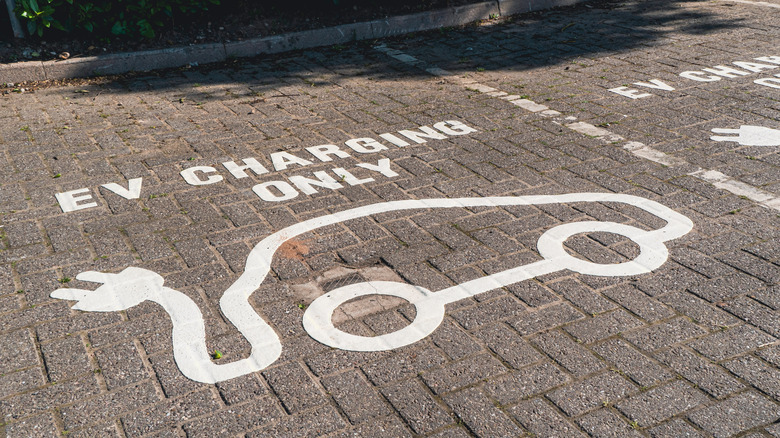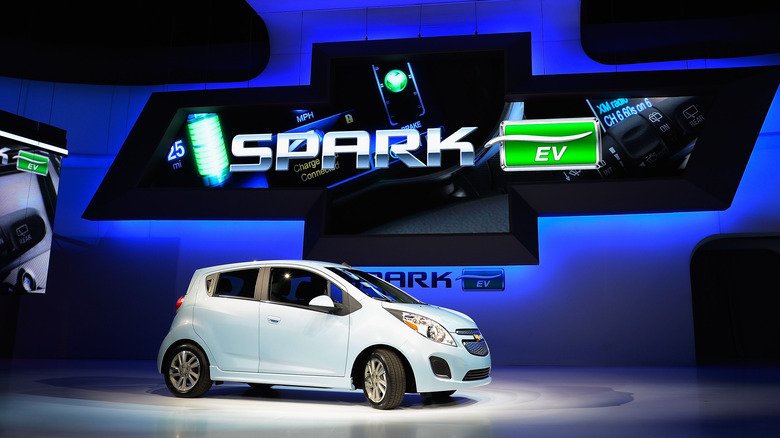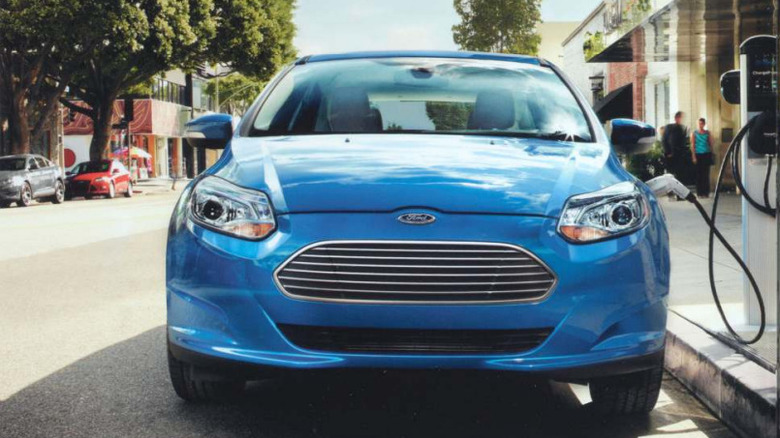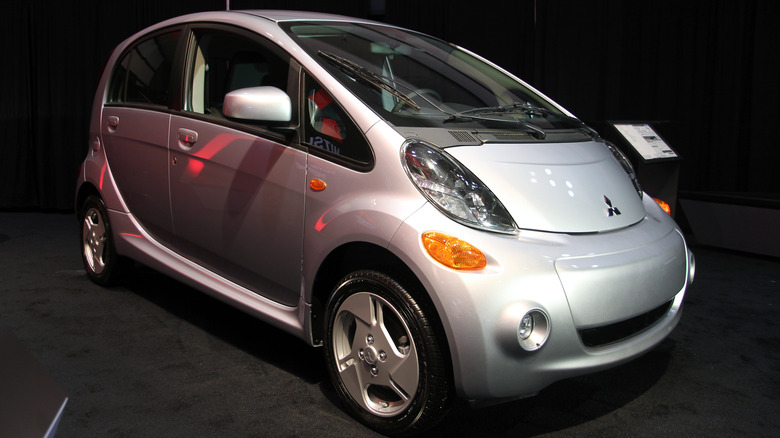These Are 3 Of The Worst EVs Of All Time
Despite their somewhat slow adoption, electric vehicles like the Tesla Model 3, Chevy Bolt, and new Kia EV6 have become more or less "normal" cars at this point. Most EVs on sale today have more than enough range for everyday use. As long as they can find a fast-charging station or charge overnight, drivers running daily errands or commuting don't have to worry about the battery running dry. There are still plenty of improvements to be made to ensure a more EV-friendly future, but they are firmly here to stay.
That has not always been the case, however. For every wild success like the Ford F-150 Lighting, or Tesla Model S, there are EVs that missed the mark entirely on what make them viable for everyday use.
Chevrolet Spark EV
If you walk into any Chevrolet dealership today, you are more than likely to see a few Chevy Sparks on the lot. The current model is equipped with a 1.4L four-cylinder engine that puts out a grand total of 98 horsepower. It's Chevy's cheapest car at just under $14,000 and offers features like CarPlay standard. Until recently, some new Sparks could be configured with manual crank windows — truly innovative.
Back in 2013, General Motors made an all-electric version of the Spark to comply with California's (new at the time) emissions regulations (via Green Car Reports). The result was a less than valiant effort. Its motors were assembled just outside of Baltimore, Maryland, and shipped all the way to GM's operations in South Korea for production.
For specs, the Spark wasn't weak at 140 horsepower and over 300 foot-pounds of torque, but it only had a realistic range of about 80 miles, and it took more than seven hours to charge without a fast charger. An Edmunds review of the 2016 model noted that charging from a 110-volt outlet took over 20 hours for a full battery. To make matters worse, Spark EVs in the United States were only offered in Oregon, California and Maryland, according to Edmunds.
Ford Focus EV
Before Ford axed most of its lineup in 2018, Ford made an all-electric version of its ubiquitous Ford Focus hatchback. On paper, it seemed like a winner. Take an already popular car and electrify it. That's essentially what Ford is doing now with the F-150 Lightning and what Chevy is doing with the upcoming Equinox EV. But it wasn't always smooth sailing.
If anything, the Focus EV was worse than its gas-engine counterpart. According to Ford, a 2015 Focus EV only had a top speed of 84 miles per hour and a range of 76 miles. That's barely serviceable for any extended driving, and although most highways have a speed limit of 65 miles per hour, pinning the speedometer at 84 isn't bound to get anyone excited. For comparison, the lowest-tier Tesla Model S from the time achieved a range of over 200 miles.
Although Ford's decision to kill off the Focus may have made some fans sad, it's hard to see why anyone would miss its electrified doppelganger.
Mitsubishi i-MiEV
The Mitsubishi i-MiEV is named more like a knockoff iPhone accessory than a street-legal vehicle. On the outside the i-MiEV looks like a golf cart with a license plate. While looks are subjective, mechanical specs are not. Compared to anything but a bicycle or a decades old beater car, the i-MiEV completely falls apart, perhaps literally. An Edmunds review of a 2016 model bemoaned its generally poor interior construction.
For range, the i-MiEV is only marginally useful. According to Edmunds, the Mitsubishi has a paltry 62 miles of estimated range. Pair that with a glacial rate of more than 7 hours for a fully charged battery. While even inexpensive EVs from the mid-2010s had a brisk rate of acceleration, the i-MiEV wasn't swinging for the fences. Acceleration tests found that the poor EV when from 0-60 miles per hour in 14.7 seconds (per Edmunds). A 2017 Chevy Bolt can achieve highway speed in 6.5 seconds.
Overseas, an i-MiEV might make more sense where destinations are close and roads may be smaller. But the i-MiEV would feel downright terrifying to drive near any of the gargantuan SUVs and trucks that inhabit U.S. highways and cities.



